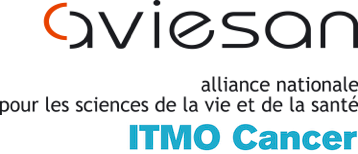Research project
Myelodysplastic syndromes (MDS) are hematological malignancies characterized by a low production of mature blood cells and are considered as a preleukemic step in 30 to 40% of the cases where an Acute Myeloid Leukemia (AML) could appear. Dysregulations of the « non hematopoietic » medullar microenvironment (ME) are suspected to be key features of the leukemic transformation. To go further in this hypothesis, we set up a model in immunodeficient mice where a humanized bone marrow (hOssicles) is created to host human hematopoiesis. By using this model, we are able to identify some key dysregulations on the pathological ME of MDS to consider them as players in the MDS evolution into AML.
Recently described, VEXAS syndrome is also an hematological malignancie, close to MDS, but without the capacity to evolve into AML. Our global project will try to identify specific features of the ME of this two entited.
The medullar microenvironment (ME) is an active player in the pathophysiology of MDS (For Review, Friedrich et al, Diagnostics 2022). Although they have elucidated a number of mechanisms concerning the pathophysiology of myeloid malignancies, xenotransplantation models do not take into account the human component of the BMME and have proved very disappointing in terms of engraftment, particularly when applied to MDS.
In collaboration with the Team of F Pflumio (IRCM, Laboratory of Hematopoietic Stem cells and leukemia), the main objectives of this project are to get insights in the description of the hOssicles model recently set up in the team by using Mesenchymal Stromal Cells (MSC) and to apply it to MDS and to VEXAS syndrome.
We showed that MSCs from all MDS subtypes were capable to generate hOSS and that MSCs re-amplified from hOSS retained their molecular characteristics, underscoring the relevance of this model for reproducing a humanized pathological ME. Our current experiments are focused on deciphering the effects of this pathological ME on the normal human hematopoiesis
Finally, this model of hOss will be applied to MDS and VEXAS syndrome and would allow the team to identify some therapetic vulnerabilities of the pathological ME, which will be considered as complementary to actual approaches.








